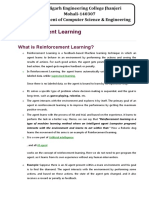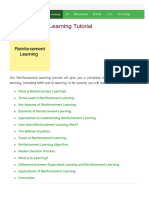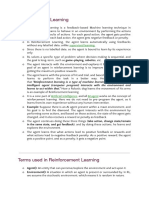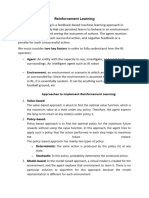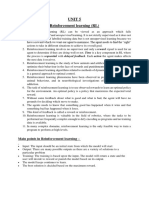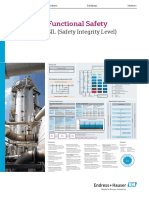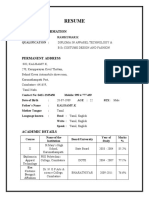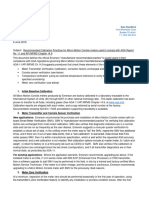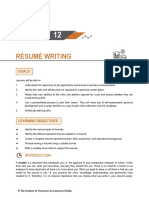0% found this document useful (0 votes)
31 views22 pagesUnit 5 Part1 RL Notes
Reinforcement Learning (RL) is a machine learning technique where an agent learns to make decisions through feedback from its environment, receiving positive rewards for good actions and penalties for bad ones. It operates without labeled data, relying on experience to improve performance in sequential decision-making tasks like game-playing and robotics. Key components of RL include the agent, environment, actions, states, rewards, and policies, with approaches such as value-based, policy-based, and model-based methods to implement RL strategies.
Uploaded by
tanishqsinghdhedaCopyright
© © All Rights Reserved
We take content rights seriously. If you suspect this is your content, claim it here.
Available Formats
Download as PDF, TXT or read online on Scribd
0% found this document useful (0 votes)
31 views22 pagesUnit 5 Part1 RL Notes
Reinforcement Learning (RL) is a machine learning technique where an agent learns to make decisions through feedback from its environment, receiving positive rewards for good actions and penalties for bad ones. It operates without labeled data, relying on experience to improve performance in sequential decision-making tasks like game-playing and robotics. Key components of RL include the agent, environment, actions, states, rewards, and policies, with approaches such as value-based, policy-based, and model-based methods to implement RL strategies.
Uploaded by
tanishqsinghdhedaCopyright
© © All Rights Reserved
We take content rights seriously. If you suspect this is your content, claim it here.
Available Formats
Download as PDF, TXT or read online on Scribd
/ 22

